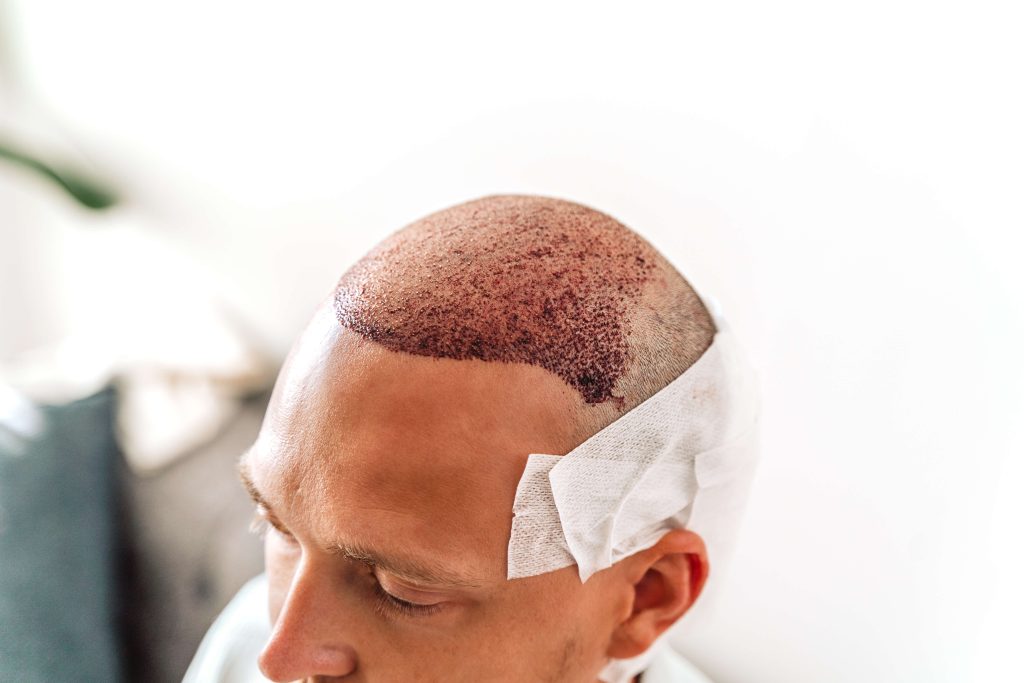
Hair loss is a very common issue which affects millions of people and can significantly impact an individual’s self-esteem and confidence. Whether caused by genetics, hormonal imbalances, medical conditions, or other factors, hair loss can be distressing and lead to feelings of self-consciousness.
Fortunately, hair transplant procedures have emerged as an effective solution for individuals seeking to regain natural hair growth. The procedure adopts two primary techniques, Follicular Unit Transplantation (FUT) and Follicular Unit Extraction (FUE). FUT involves removing a strip of the scalp for donor hair extraction, while FUE involves individually extracting hair follicles. Both methods ensure natural-looking results by transplanting healthy hair follicles into the desired area.
Robotic FUE (Follicular Unit Extraction) hair transplant is a procedure that utilizes robotic technology to aid the surgeon in moving hair follicles from a donor area, typically the back or side of the scalp, to areas affected by hair loss, such as the frontal hairline or crown using a small punch tool.
It is crucial to have a comprehensive consultation with a specialist before undergoing a hair transplant. The specialist will assess the degree of hair loss, evaluate the availability of donor hair, and establish realistic expectations.
Benefits of Hair Transplant:
Hair transplant offers numerous benefits for individuals struggling with hair loss. Firstly, it provides a permanent solution, as transplanted hair follicles are resistant to hair loss. Secondly, the results appear natural, with hair growing and blending with the surrounding hair. Hair transplant procedures are minimally invasive and typically performed on an outpatient basis, allowing for a quicker recovery period.
The use of a robotic arm in hair transplantation offers several advantages. Firstly, the robotic arm operates at a consistent pace, reducing the risk of human error and enhancing the accuracy of the extraction process. The robotic arm’s precise movements greatly minimize the risk of human error, reducing the possibility of harm to the hair follicles during transplantation. The system follows pre-programmed algorithms, ensuring the extraction and implantation procedures are accurately carried out.
Hair transplantation is considered to be a permanent solution for hair loss. The hair follicles used for implantation are usually taken from parts of the scalp that are not genetically predisposed to hair loss. These transplanted hair follicles retain their original characteristics and will continue to grow in their new location, providing a long-term solution for hair restoration. The longevity will depend on factors like an individual’s natural hair growth cycle, the quality of the donor hair, and proper post-operative care.
Recovery and Post-Procedure Care:
After the procedure, patients may experience temporary swelling, redness, and scabbing, which typically subside within a week or two. The surgeon provides instructions on post-operative care. Protecting the scalp from sun exposure and following up with scheduled check-ups is essential to the recovery process.
Conclusion:
Hair transplant offers a permanent solution for individuals experiencing hair loss, helping restore confidence and natural hair growth. While hair transplant can be a life-changing procedure, the density and coverage achieved depend on factors such as the extent of hair loss, hair quality, and hair availability from the donor area. By understanding the procedure, benefits and recovery involved, individuals can make informed decisions and embark on a journey to reclaim their self-assurance and a fuller head of hair.









